Practice makes proficient
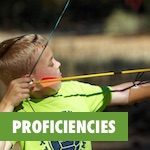 What’s special about a proficiency-based environment? Practice, that’s what.
What’s special about a proficiency-based environment? Practice, that’s what.
I know, it sounded weird to me too. As a former math teacher, I thought of practice as the mind-numbing repetitive stuff that students had to do in order to attain fluency. Practice was for straightforward procedural skills.
But Sam Nelson, a social studies teacher at Shelburne Community School, has broadened my perspective on practice to encompass all formative assessment, including complex skills and concepts.
More feedback, less evaluation
Proficiency-based environments shift the assessment focus firmly to the formative side of the spectrum.
By the time students are formally evaluated, they should have had the chance to fully unpack the expectations so that they thoroughly understand what it means to be proficient, repeatedly practice and receive formative feedback, take advantage of extra support as needed, and generally feel fairly confident that with effort they will be able to independently demonstrate proficiency.
Less is more. Less time is spent on formal evaluation, and fewer areas are evaluated. But if done right, there’s a lot more engagement and deep learning.
A fundamental building block of a proficiency-based environment is what the proficiencies are. If you are focusing on fewer outcomes, they better be ones that you truly care about. (For example, Sam and his colleagues derive all of their target proficiencies from the cross-curricular Vermont Transferable Skills.)
Perhaps even more crucial is how the proficiencies are addressed. This is where practice and formative assessment come to the fore.
The winning formula: You/We/Us/I
Nelson, in collaboration with his colleagues, has developed the “You/We/Us/I” pattern for proficiency-based units, with three stages of practice.
- You – Teacher-led
- We – As a group
- Us – Partners
- I – Independent (formal evaluation)
Let’s look at how this instructional rhythm played out in two different units.
The Election Unit
During this unit, students explored the 2016 election while tackling two proficiencies – domain-specific vocabulary and note-taking. Here’s how the note-taking proficiency developed throughout the unit.
You (teacher-led)
The unit started with a general brainstorm of the What/Why/How of note-taking so that students could engage their prior knowledge and Sam could pre-assess their skills. Students also received a resource with “how-to” information on different methods of note-taking.
Then the class read a Voting System in America article together and examined the teacher-developed notes. They compared the notes to the proficiency scale for note-taking to begin to unpack the expectations. As a group, the students and teacher evaluated the teacher-developed notes to find consensus on where they landed on the learning scale.
We (group)
Students read another common piece, chose a method and took notes. These notes were put onto a poster with a learning scale attached to the bottom. Then they provided gallery feedback while referencing the learning scale. This method facilitated deep discussions about each student’s perspective on what makes notes thorough and organized. In the end, each group received feedback from their peers, as well as their teacher.
Us (partners)
Students spent a week practicing their note-taking by playing “Note-taking bingo”. Students read four different articles and applied a different note-taking strategy to each one. The articles were teacher-provided but students chose their topics.
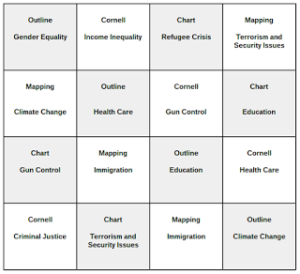
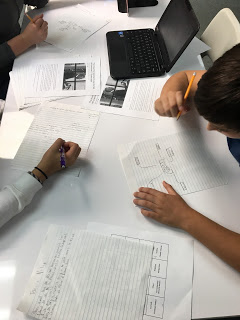

A few quotes from students during the week of note-taking:
- “Do I get to try out the charting method today?”
- “I like that we get to choose our issues. I’m really interested in immigration.”
- “I LOVE doing the mapping!”
Yes, it would appear that this approach made note-taking into something flexible, self-directed, and even fun.
I (independent)
The summative evaluation involved students choosing major election issues, explaining the backstory, examining both sides, and defending their opinion. To do so, students worked to choose their issues and find connected, credible sources. From there, students put their note-taking skills to work to cover the four major elements (backstory, pro, con, opinion).
Next, each student developed a personal political platform as the culminating performance assessment for the unit. Once the notes were taken, students chose their platform-type (letters, poems, PSA videos, etc.) to convey their learning. They included notes as part of their submission, along with a self-assessment and reflection that related their note-taking to the learning scale. This wrapped up with an authentic audience of students from another middle school team.
The Revolution Unit
For this second example, let’s look at how this proficiency practice instructional routine works when we are addressing more complex skills. In this unit, students investigated the concept of revolution while beefing up their ability to identify patterns and trends and to trace causes and effects.
Here we will focus on the causes and effects proficiency.
You (teacher-led)
Students were introduced to the “big picture” of this project-based learning unit and were tasked to choose a social, political, or cultural revolution and explain “What is the influence of your revolution?”
This provided context for the overarching proficiency pursued during the unit.
Nelson modeled the proficiency by working through the causes and effects of him becoming a teacher.
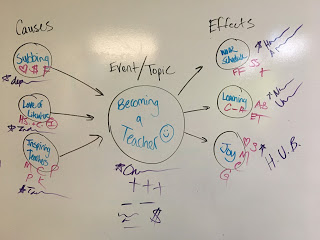
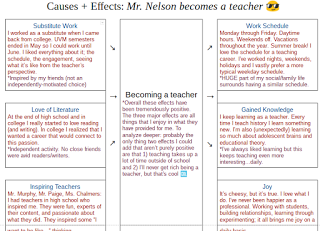
Nelson placed special emphasis on the “evaluation” portion of his model so that students could clearly see the highest level of the learning scale.
We (group)
Now it was the students’ turn. The “we” stage often includes students applying the process to something in their own lives.
In this case, each student performed a cause and effects analysis of an event in their own life; things like joining a sports team, traveling, learning to draw, getting a new pet, etc.
As a group, students looked at each others’ work and provided feedback based on the learning scale. The learning expectations are thus crystallized in the context of the life activities that middle school students care most about.
Us (partners)
Students deepened their understanding by tackling the American Revolution together. After reading a shared article on the roles of Native Americans in the American Revolution, students worked in groups to explain the causes and effects.
After a day of work, each group’s work was collected and sorted into proficiency-levels. This created four groups. The groups assessed at a 1 were brought together and received support on how to move up the scale. The same went for groups assessed at a 2 or 3. The student groups that were assessed at a 4 made a plan with Sam to split up and work with the 1’s, 2’s, and 3’s.
This system provided peer-supported differentiation within the final practice phase.
I (independent)
For the summative performance assessment, students were asked to create products that explored a revolution of their choice. They needed to identify and display the causes and effects of their chosen revolution and express the core ideas by creating something – a performance, podcast, visual art, video, etc.
Finally, students exhibited their learning in a culminating event where families and community members were invited to learn from the 5th and 6th grade students.
Burning questions
The You/We/Us/I approach is a promising way to structure proficiency-based units. If you are like me, you may have a few burning questions at this point.
- How do you write learning scales? — Nelson uses Transferable Skills as a starting point and collaborates extensively with colleagues. Also assume that the scales will naturally evolve, especially the first time they are implemented. They need to be tried with students and adapted based on their feedback.
- Where’s the content? — As evident from the play-by-play, there is a lot of content spread throughout these units. In the Election Unit, for example, students explored America’s voting system, political parties and specific candidates, and major social issues. When there are facts that need to be memorized, Nelson uses gamification to motivate students but doesn’t include any recall-based traditional assessments. The overarching focus remains Transferable Skill proficiencies.
- How much evaluation is enough? — Nelson formally evaluates 6-8 proficiencies for the school year, but also relies on student work exhibitions and Student Led Conferences. Each proficiency is formally assessed 3-5 times total throughout the year.
- Why do all this again? — Nelson’s elevator pitch, which I find totally convincing: “A balanced set of Transferable Skills is a relevant and integral replacement of traditional, content-based curriculum. The stress of ‘covering all of the curriculum’ disappears. Focusing on lifelong skills rather than a breadth of facts and figures enriches and enhances learning. Classrooms become full of engaged, confident, stake-holding students.”
If you have more questions, please feel free to email Nelson at snelson@cssu.org. You can also find him on twitter as @mrnelsonteaches.
How will you use practice in innovative ways to enhance learning?
*Note that Nelson wrote about his approach in the October 2016 issue of Middle Grades Review. At the time he termed it “I/We/Us/You” – this was before his students suggested that it be named from their perspective. He and his students also created a rap video using the old taxonomy, which is still well worth watching and might be a great way to generate discussion with students.
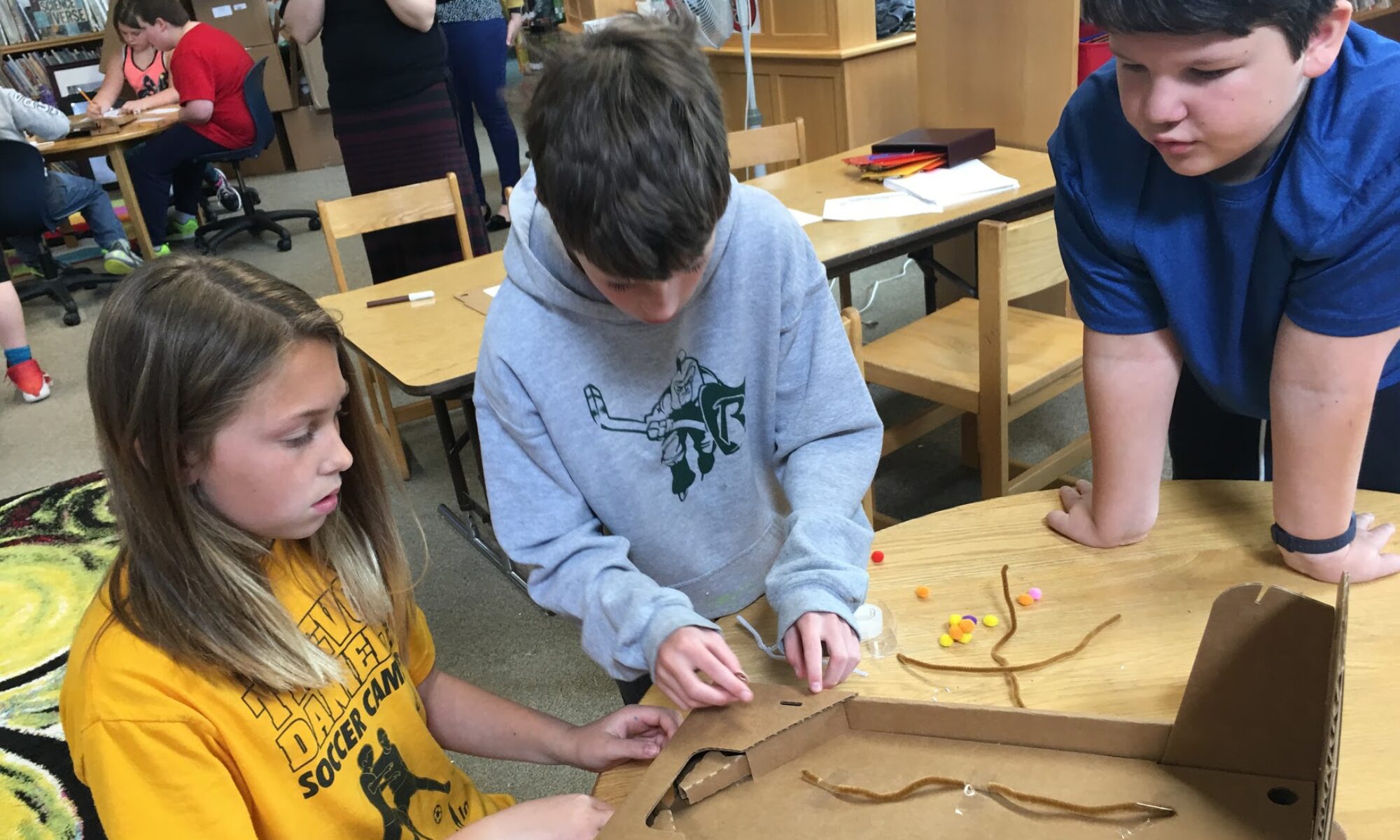

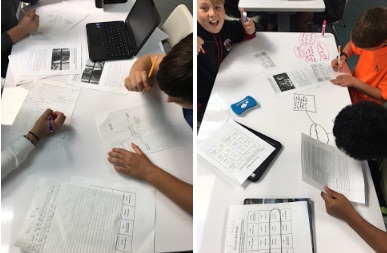

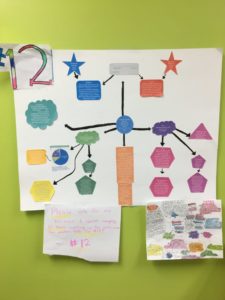
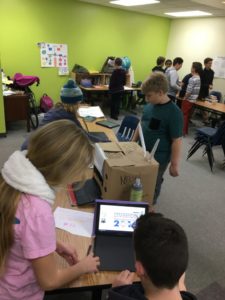

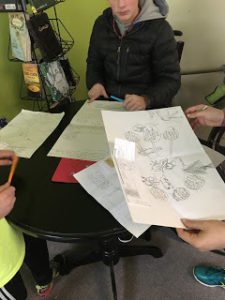
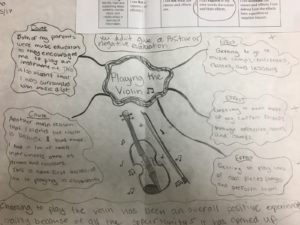
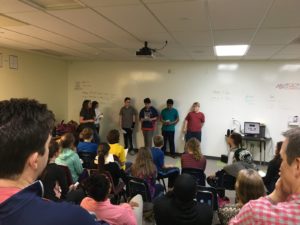
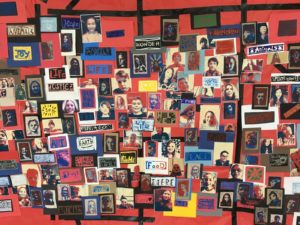
2 Replies to “The crucial role of practice in a proficiency-based environment”
Comments are closed.